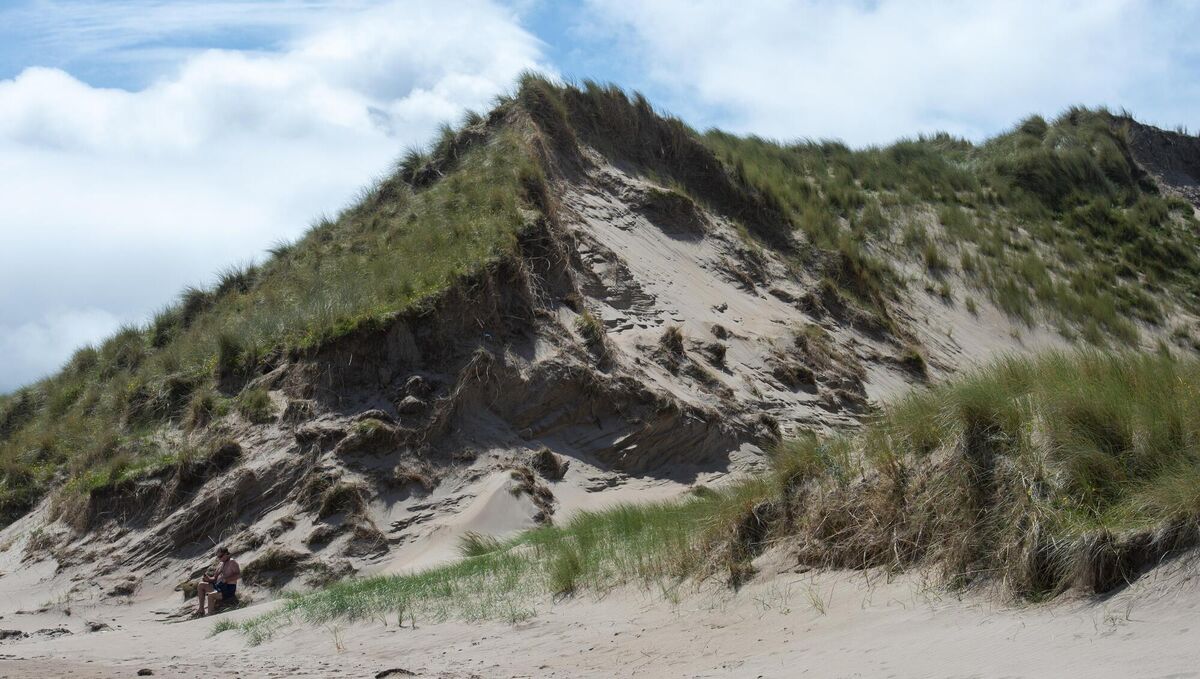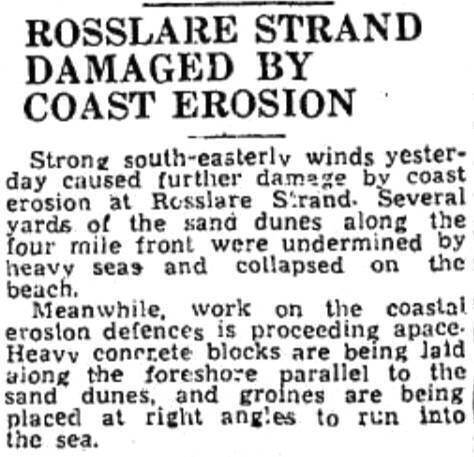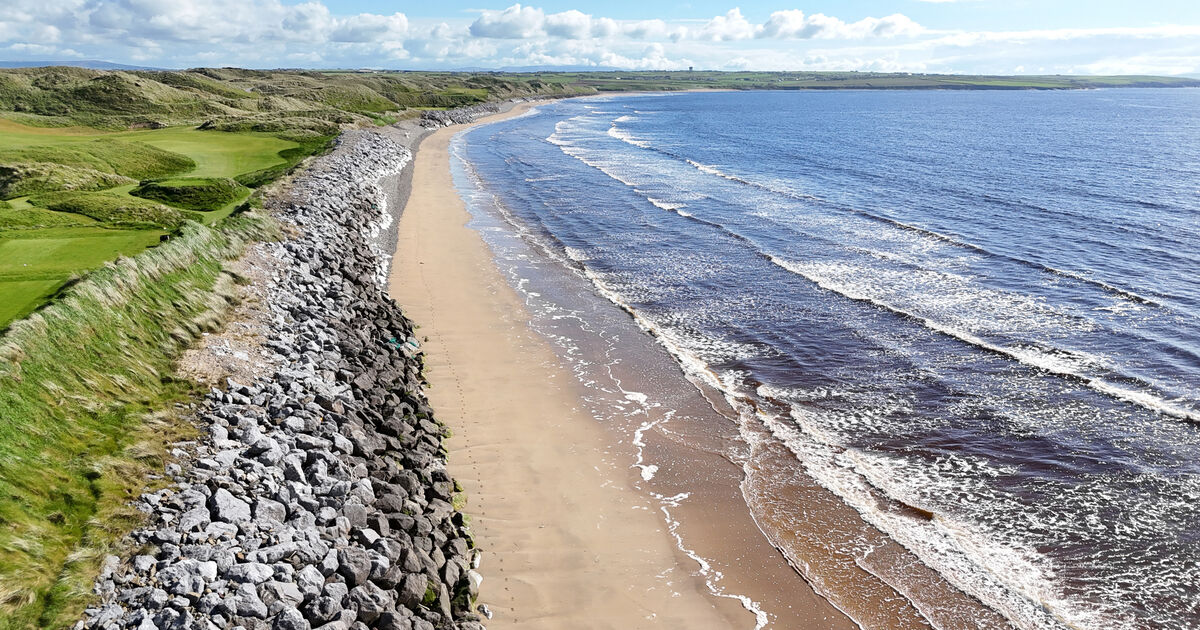Ireland’s 7,500km coastline is one of our country’s greatest natural treasures — an ever-changing ribbon of cliffs, beaches, dunes, and estuaries — and islands — that shapes not only our geography but also our cultural identity. Yet, from Donegal to Dingle, an invisible enemy is chipping away at the edges: coastal erosion.
Every winter storm, every rising tide, is part of a slow but persistent process of transformation. Entire sections of coast are disappearing into the sea. And while erosion is a natural process, it’s now accelerating due to human activity and climate change. The question we face is no longer if we should act, but how.
Nature on the move
Coastal erosion refers to the wearing away of land by the sea. Waves, currents, and winds gradually remove soil, sand, and rock from the shoreline. In places where natural buffers such as sand dunes, saltmarshes, or wetlands are intact, erosion is usually slow and cyclical. But when these protective features are damaged, or when sea levels rise and storms intensify, erosion speeds up dramatically.
 Rock armour and gabion basket protection work at Ballybunion beach near the golf course coastline.
Rock armour and gabion basket protection work at Ballybunion beach near the golf course coastline.
In Ireland, we are already seeing the impacts. Some of the most high-profile cases have made headlines in recent years. At Portrane in north County Dublin, residents have seen their gardens, and in some cases entire homes, fall into the sea. In Lahinch, County Clare, and Rosslare Strand, Wexford, beaches have narrowed significantly, impacting tourism and local livelihoods. County Kerry’s Inch Strand, famous for its long sandy spit, is now being monitored closely after major storm damage.
The Environmental Protection Agency (EPA) estimates that 20–30% of Ireland’s soft (non-rocky) coastline, such as sandy beaches and dunes, is vulnerable to erosion. Sea level around our coasts has risen by roughly 3-4 mm per year over the past three decades, and future projections suggest that this rate will accelerate. More extreme and frequent storm surges, such as Storms Ophelia, Emma, and Barra, compound the problem.
Coastal Development
One major challenge is how we’ve developed the coast. Holiday homes, caravan parks, golf courses, and roads are often built just metres from the shoreline, leaving little room for natural systems to adapt. Concrete sea walls and rock armour are used as defences, but they can sometimes worsen erosion elsewhere, disrupting the natural flow of sediment.
 Sand dunes which have been damaged by coastal erosion at Rossbeigh beach in Kerry. Picture: Dan Linehan
Sand dunes which have been damaged by coastal erosion at Rossbeigh beach in Kerry. Picture: Dan Linehan
Traditional ‘hard’ coastal protection measures are expensive and not always effective in the long term. For example, when waves crash against a sea wall, the energy is reflected downward and sideways, often eroding the base or neighbouring shorelines. As the sea keeps rising, defences have to be raised or reinforced, creating a costly cycle of maintenance.
It’s time for a smarter approach — one that works with nature, not against it.
Solutions on the horizon
Nature-Based Solutions (NbS) offer a promising way forward. Instead of trying to outbuild the ocean, we can restore and strengthen natural coastal defences. This includes:
· Dune restoration. Stabilising sand dunes using native grasses and fencing to trap sand can buffer wave energy and provide critical habitats.
· Saltmarsh and wetland protection. These act as natural sponges, absorbing storm surges and reducing flooding inland. Rewetting drained marshes helps them recover.
· Managed retreat. In some places, the most sustainable option is to allow the coastline to shift naturally by relocating vulnerable infrastructure inland.
· Living shorelines. These hybrid systems use a mix of vegetation, oyster reefs, and biodegradable materials to reduce erosion while supporting marine biodiversity.
 Rosslare strand damaged by coast erosion. Irish Examiner (then Cork Examiner) Wednesday, March 11, 1959
Rosslare strand damaged by coast erosion. Irish Examiner (then Cork Examiner) Wednesday, March 11, 1959
Projects like the OPW’s Coastal Monitoring Programme, and local authorities such as Wexford County Council, are beginning to integrate these softer engineering techniques. At the European level, Ireland is part of coastal adaptation programmes under the Climate Action Plan and Horizon Europe projects.
But more investment and coordination are needed. A recent report by the Climate Change Advisory Council noted the lack of a comprehensive, national coastal adaptation strategy. Without one, responses remain piecemeal and reactive.
Communities on the front line
Coastal erosion is not just a scientific issue, it’s a social one. People living in vulnerable coastal areas often feel ignored or unsupported. Insurance may not cover erosion damage. Planning policies may restrict rebuilding after loss but offer little support for relocation. Emotional ties to place, such as family homes, heritage, livelihoods, are difficult to let go of.
Public engagement is crucial. We need open conversations about trade-offs and priorities. Some areas will require robust defences; others may need to be given back to the sea. Local knowledge and citizen science can play a key role in shaping fair and resilient responses.
 Heritage Council chairperson, Dr Martina Moloney, and chief executive, Virginia Teehan, at Heritage Horizons: Pathways to the Future, a national conference hosted by the Heritage Council at the Royal Hospital Kilmainham, Dublin in May, 2025. Dr Moloney and Ms Teehan are pictured alongside an image of the Illauntannig Monastic Site in Kerry, which is at significant risk from coastal erosion. Picture: Marc O’Sullivan
Heritage Council chairperson, Dr Martina Moloney, and chief executive, Virginia Teehan, at Heritage Horizons: Pathways to the Future, a national conference hosted by the Heritage Council at the Royal Hospital Kilmainham, Dublin in May, 2025. Dr Moloney and Ms Teehan are pictured alongside an image of the Illauntannig Monastic Site in Kerry, which is at significant risk from coastal erosion. Picture: Marc O’Sullivan
Holding the line or letting go?
We must accept that we cannot ‘hold the line’ everywhere. The coast has never been fixed; it has always moved. But with the added stress of climate change, the pace of change is now outstripping our capacity to respond.
Adapting to coastal erosion means rethinking how we value and use our coast, not just as a boundary, but as a living, transient system. To live with erosion is to let go of the illusion of permanence. With science to guide us, communities to ground us, and leadership to drive us, we can respond not with fear, but with foresight.
Ireland’s story has always been written at the edge of the sea. Let the next chapter be one of adaptation. The sea may be rising, but with the right approach, so too can our resilience.
